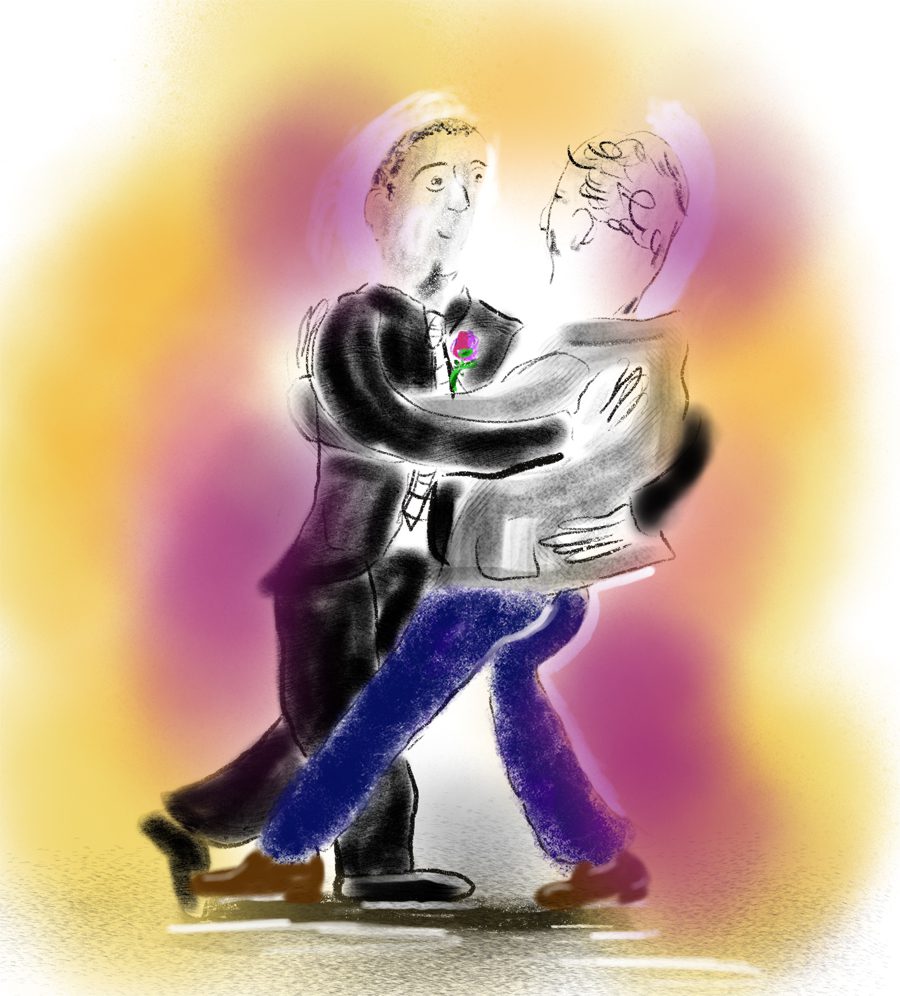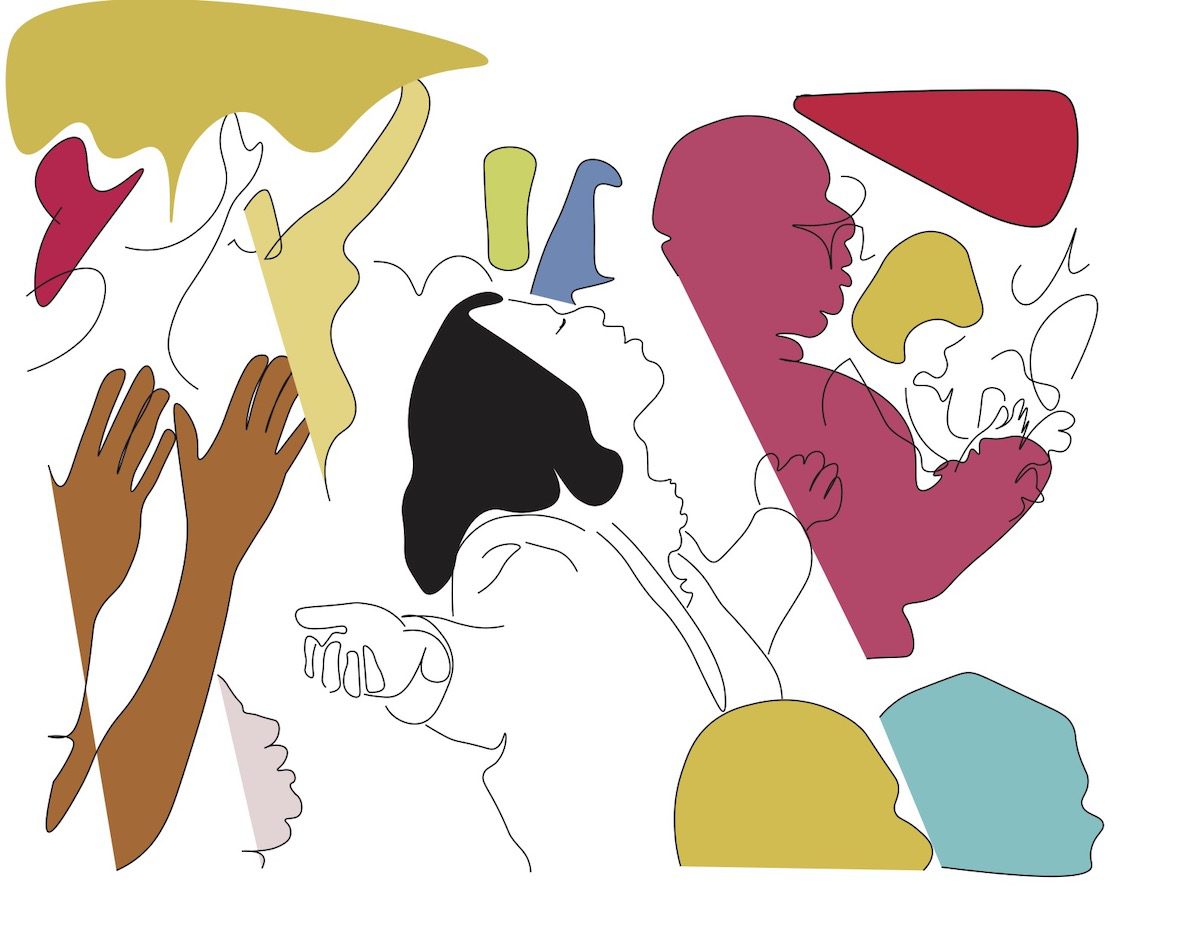When I listen to the White Stripes’ De Stijl I relive December 2001, which was when I accompanied my friend Hung on a road trip from New Orleans to Tucson. He had to get a broken 1940s Cadillac from NOLA’s Vietnamese enclave of Versailles to his home in California and I was in town from Tucson for the Modern Language Association convention. So rather than fly back, I volunteered to accompany him part of the way. We took turns driving his 1970s red truck, Caddy in tow, along the dry stretch of I-10 across Texas and New Mexico.
We blazed along a dusty interstate that fast food chains somehow failed to colonize—brisket sandwich from a gas station, anyone?—accompanied by two Detroit-made antiques. I can’t think of a better backdrop for the outmoded, neo-luddite sound of the White Stripes. As Hung nodded off when I took the wheel, I’d slip De Stijl into the now anachronistic CD player, watch the big green saguaro and listen to the duo’s basic elements of electric guitar, voice and rudimentary drumming create something as large as the expanse before me.
The Stripes’ simplicity—no drum machines, synthesizers, samples, auto tuning, heavy-handed production or bass guitar—is best on display in opener “You’re Pretty Good Lookin’ (For a Girl),” an odd pop confection that needs less than two minutes to ingratiate itself with listeners, while the album’s centerpiece is a cover of blues great Son House’s “Death Letter,” a depressing ballad about a man who learns of his lover’s demise via letter, views her body laid out on a “cooling board” and watches her burial. The White Stripes speed up the tempo and add a vaguely punk aesthetic, which is betrayed by the accomplished intricacy of Jack White’s guitar work.
Hung, a doctoral student in philosophy, came to America as a toddler and grew up in an insular Vietnamese community in Louisiana. He seemingly learned English from first-generation gangster rap of the 80s, his speech punctuated by both Asian-American ESL—“This barbecue sandwich only costs two dollar”—and the occasional obscenity—“Bitch, I have 250 page of Augustine to read.” It speaks to the power of the Stripes’ stripped down aesthetic that Hung, partial to hip-hop, could appreciate a band that eschewed bass altogether.
By all accounts Jack White is the mythic figure behind both the sentiment and the paradoxical juxtaposition of simplicity and intricacy. A decade before the cross-country road trip I’d started college in Detroit where Jack White’s first band Goober and the Peas enjoyed a cult following. Seeing bands like Goober, who were dedicated to the process of creating something new, fueled my own passion for creativity. For me that was the written word. For Hung, who I would occasionally subject to indie rock even though he favored Dr. Dre over garage bands, it was the car he was rebuilding.
After college I didn’t really follow indie rock, which had become pretty boring by the time I was in the thick of doctoral studies in rhetoric at the University of Arizona. I kept up with the Motor City by reading the Detroit papers online, where they talked about some band that played Captain Beefheart covers and had hokey elements like dressing in red and white. It was the appearance of the White Stripes, featuring an ex-Goober, that reminded me of my love of rock music. Their sense of fun knocked me over. Jack played guitar and sang and his shy ex-wife Meg played drums. Part blues, part pop, part punk, they became the first band I discovered on the Internet. They got me excited about rock music again, right about the time I was finishing that PhD and should have been leaving behind childhood. I’m glad I didn’t.
Right around the time Hung and I pulled into Tucson the White Stripes left behind the garage for MTV, Saturday Night Live and the chance to share a stage with Dylan and the Stones. Like Nirvana before them, the band represented a weird moment when something subterranean takes a peek at the sunlight, which isn’t a bad thing, because that way more people partake in something strange and wonderful. More kids—college kids, little kids, whomever—see artists building something new. More adults decide not to leave behind childish things.
The Stripes made four records after De Stijl, none quite as good. Jack White borrowed the album name from the movement of the same name. Meaning “The Style,” De Stijl was a group of Dutch designers who created harmony and symmetry out of simple, abstract elements. The record juxtaposed blues covers with two-minute punk rave-ups and sentimental stories of falling in love. It shouldn’t be on your record shelf, it should be on your turntable, right now. It should soundtrack your road trips. And, by the way, you should take road trips, even if you’re a grown-up.
The White Stripes broke up recently and that’s a shame, but in their decade-plus of making music they created something. Let’s all do the same.




